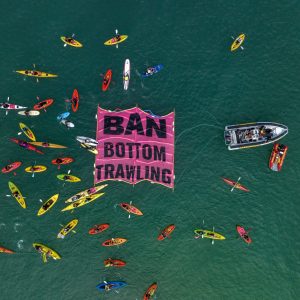For young and old crayfish are a taonga, a treasure, so recent Ministerial decisions to keep some stocks at all-time lows to meet export orders is abysmal. Nathan Guy announced his decisions for the future management of crayfish on March 20th and these will apply from April 1st.
Crayfish can retail up to $150 per kilo so many Kiwis do not buy crayfish. Our only alternative is to catch them ourselves, but that task just got harder, especially off the east coast.

Management Area 2, from Pakiri in the north, the Hauraki Gulf, the Barriers, Mercurys, Coromandel and Bay of Plenty, is prime crayfish territory yet it has the lowest catch rates in the country – so low that recreational fishers can only take around 30% of their annual allowance. Not much will change.
In Area 3, from East Cape, to Gisborne and Hawke Bay, recreational fishers catch on average the smallest fish, at 580g per crayfish. No improvement is expected as quota levels have just been increased by 15%.
LegaSea was hopeful the Minister would be astute enough to ignore the commercially biased advice he was given, and make a bold decision to impose a meaningful quota cut and double the stock size in Area 2, while being conservative in Area 3.
Instead, the Minister only cut Area 2 quota by 15% and increased Area 3 quota by the same margin, spurning any opportunity to improve recreational fishing.
There are examples of good management practices in some cray fisheries. In cray Area 5 (Top & east South Island) some very astute fishermen in CRAMAC5 have insisted on conservative management and turned down the idea of a Management Procedure to maximise catch.
Pressure on Bay of Plenty fishery
A common theme during the recent LegaSea campaign was that recreational fishers and divers are reporting a steady decline in abundance where they fish, and a proliferation of commercial pots.
Low catch rates are driving commercial effort into every nook and cranny of available fishing grounds. The Minister’s decisions will not dent the numbers of crayfish pots that are littering popular coastal areas.
The new Area 2 Management Procedure will be in force for the next five years, unless the fishery collapses – a real possibility.
Any hopes we had of restoring crayfish abundance in a reasonable timeframe have been dashed.
Gisborne woes continue
In Area 3 around Gisborne recreational prospects just got worse with the 15% quota increase. This is a fishery where commercial fishers have become dependent on undersize crayfish to fill their quota. Increasing quota means more of these small crayfish will disappear offshore. It also means recreational fishers will struggle to find a legal size fish to take home.
Local recreational fishers despair that successive Ministers have sanctioned the loophole enabling commercial fishers to take sub-legal crayfish. This concession was granted in 1993 as a “temporary” measure to help commercial fishers survive after a severe quota cut was applied, because the fishery had collapsed under their fishing pressure. After 21 years there is no justification for increasing quota or retaining the concession.
Bright spot on the West coast
There is a bright spot. The west coast fishery from the Kaipara to Westland in the South Island seems to be the healthiest fishery in the country. It has a reasonable number of large crayfish and these fulfil an important role in the marine ecosystem.
Fishers in this area (CRA 9) have accepted a new Management Procedure that will allow current good catch rates to be maintained and the commercial fishery closed if the average falls below half a kilo per potlift.
Compare this to cray Area 2 where the current catch rate is just 0.41kg per potlift and the Minister has just set a 200 tonne commercial catch limit. In 2012 the commercial catch rate per potlift in cray Area 9 was seven times the rate in Area 2.
Congratulations must go to the commercial body, CRAMAC9, who have avoided maximum catch strategies, opting instead for higher abundance and catch rates. Other areas could take a lesson from this successful strategy.
LegaSea urged the Minister to set conservative catch levels. Nathan Guy’s decision is pleasing and ought to maintain the fishery in a healthy state for the foreseeable future.
Fundamental change required
There is cold comfort from Nathan Guy’s assurance that there are no changes to recreational fishing limits. For many east coast fishers, the effort and expense of their dive or potting trip is often not rewarded.
Crayfish, particularly the large ones, play an important role in the marine ecosystem, being active scavengers and predators, also producing huge numbers of eggs and juveniles. They were once a dominant species in rocky areas around the country. Managing each species for maximum yield takes no account of the services they provide in the wider ecosystem.
Nathan Guy has made his intentions clear when it comes to managing our crayfish. Commercial interests and export dollars are more important than rebuilding the fisheries or our public fishing interests.
While this approach might earn the Minister for Primary Industries brownie points amongst quota owners, it does nothing to acknowledge the fragile state of our crayfish stocks or address the risks posed to the ecosystem.
Given the feedback to LegaSea since his March decision, many people will be looking closely at fisheries policies and recent decisions in the lead-up to the September election. Make no mistake, the election is won and lost in the upper North Island where around two million people live and work. Fishing and diving are popular activities.
Make your vote count.





